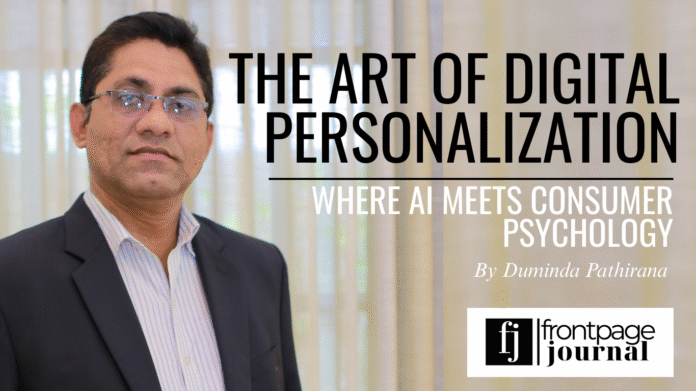In today’s hyperconnected economy, personalization is no longer a marketing novelty, it is an expectation. The modern consumer has grown accustomed to content curated for their preferences, offers timed to their behaviors, and brand interactions that feel less like mass communication and more like a private dialogue. But what sets apart a personalized experience from mere digital targeting is the fusion of advanced machine learning algorithms with a deep understanding of consumer psychology. For C-suite leaders, mastering this fusion is not simply about marketing efficacy, it is a strategic imperative for long-term customer loyalty and sustainable growth.
Digital personalization has evolved rapidly due to breakthroughs in AI-driven predictive analytics, real-time behavioral tracking, and the maturity of customer data platforms (CDPs). Brands are now capable of tailoring product recommendations, dynamic pricing, email content, app interfaces, and even website architecture, all in response to micro-behaviors exhibited by the consumer. While this technological sophistication is vital, its true value lies in how it leverages psychological principles of attention, relevance, and emotional engagementto shape perception and influence decision-making.
Consider the Elaboration Likelihood Model (ELM) from consumer psychology. It suggests that individuals process information via either a central route (based on reasoning) or a peripheral route (based on cues like emotion or aesthetics). Personalized marketing, when aligned with user intent, effectively activates both pathways. AI systems that learn when a user is most receptive to certain messages, at what frequency, and in what format, are not just improving relevance, they are enhancing cognitive resonance. This is where personalization becomes persuasion.
Strategically, the business case for personalization is undeniable. Research by McKinsey & Company suggests that personalization can deliver 5 to 15 percent increases in revenueand 10 to 30 percent improvements in marketing-spend efficiency. But the impact runs deeper than financial performance. Personalized experiences increase customer satisfaction, reduce churn, and build what psychologists call “psychological ownership”, the sense that a product or experience is uniquely yours. When a customer perceives a brand as understanding them better than competitors, brand loyalty becomes habitual rather than transactional.
However, with great personalization power comes significant responsibility. The ethical use of data is no longer a compliance checkbox, it is central to brand reputation and long-term trust. The General Data Protection Regulation (GDPR) in the EU, and similar policies emerging globally, underscore a new digital reality: consent, transparency, and data minimalism are now part of brand identity. C-suites must adopt a privacy-by-design approach, embedding data ethics into product and campaign development from the ground up.
Leading companies are already making this transition. Netflix, for instance, uses machine learning not only to personalize recommendations, but also to shape content production strategies. The thumbnails a user sees are personalized using reinforcement learning models, adapting image type, color, and actors based on user preferences and prior behavior. Similarly, Spotify’s iconic “Wrapped” campaign turns user listening data into a shareable narrative, activating emotional reward systems and social validation triggers. These are not just marketing tactics, they are data-infused brand rituals that foster community and emotional belonging.
At a strategic level, digital personalization must now be framed not as a marketing add-on, but as an enterprise-wide capability. This means investing in first-party data infrastructures, developing cross-functional analytics teams, and integrating machine learning pipelines into CRM, sales, and service operations. Moreover, the leadership conversation must shift from “how do we automate personalization” to “how do we humanize automation.”
This is where digital empathyenters the boardroom. The next evolution in personalization is not just AI that adapts, but AI that understands, systems that can interpret not only purchase history but emotional cues, decision fatigue, and contextual signals. The goal is to move from reactive personalization (based on past behavior) to anticipatory personalization (based on likely intent and evolving emotional needs).
For senior executives, the strategic imperative is clear: personalization is now a core component of the brand experience strategy, not just a marketing tactic. It influences product development, UX design, loyalty architecture, and even corporate ethics. Brands that fail to build meaningful, respectful personalization frameworks risk irrelevance. Those that succeed will not only command greater market share, they will earn emotional equity.
In this environment, the true art of personalization lies in aligning data intelligence with human insight, delivering value that feels intuitive, respectful, and real. This is not about technology replacing human connection. It is about technology enhancing it.
For C-suite leaders navigating digital transformation, the question is no longer “Should we personalize?” but rather, “How can we use personalization to deepen trust, drive value, and design better brand futures?”
Because in the end, the brands that win are the ones that remember the individual behind the data point, and design every digital moment accordingly.




